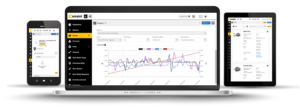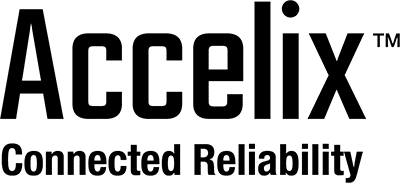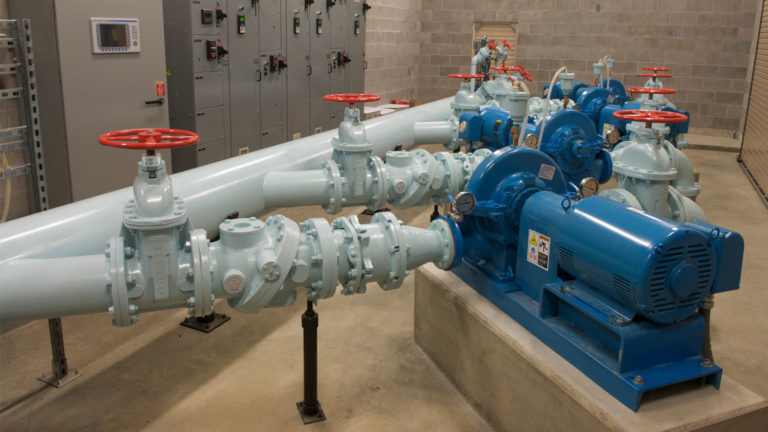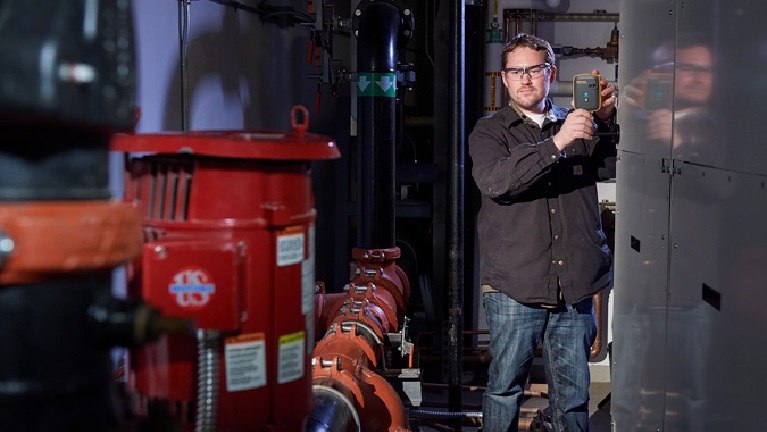eMaint implementation at Inframark has been a success

By Pamela Curry, Inframark Special Projects Manager
Reprinted with permission from the Inframark newsletter, The Source, October 2019
Inframark’s first eMaint system went live in mid-2018, kicking off an effort to put in place a common computerized maintenance management system (CMMS) platform at all Inframark ConOps projects. When we started, projects were using a variety of systems with varying levels of utilization. Each was standalone, with most loaded on individual computers so dependent upon the machine continuing to run without issue in order to support the maintenance program.
With eMaint, Inframark has a modern, cloud-based system requiring only the Internet to access the CMMS. All systems have the same configuration to support a consolidated view into data across project lines. We have fields with the same standardized selections to draw parallels while including flexibility in other fields where projects are able to use local nomenclature.
The implementations have been a combination of data preparation, training and ongoing support to create foundational PMs and ramp up the generation and closing of work orders. Data prep is a collaborative process with implementation team members working with project staff to capture and flush out required detail. With all required data, systems are in place for 41 projects. Of these, 31 are considered completely implemented and continuing to mature while 10 more projects are in varying stages of building PMs, and generating and closing work orders as they, too, approach completion. To date, there are nearly 22,000 pieces of equipment in the combined Inframark systems and 35,000 work orders have been generated.
“eMaint has so much capability. It is an astounding, wonderful platform to use once you understand it. The more I use it, the easier it becomes,” said Gene Chisum, Project Manager, McAlester, Okla.
More than 100 people have participated in one of eight, three-day in-person training sessions led by eMaint in Texas, Pennsylvania, California, Oklahoma, and Connecticut. The training agenda includes hands-on exercises, where attendees can try out the processes that are covered in a specific module.
“eMaint was implemented at our project August 1, 2019. Another employee and I went to Texas to learn all about eMaint. The classes held were very informative. Now that we are live, we are learning more as we go and… it is a good system to work in. The system is capable of doing things that are very helpful in our everyday tasks,” said Cherie Hingle, Operation Support Supervisor, Plaquemines, LA.
Attendees receive a user guide that includes eMaint support information that has been revised by Inframark and is based upon our common configuration and functionality in all systems. Users also have access to eMaint University webinars and online support documentation.
Automated reporting has been put in place, with eMaint sending information to system users, project managers and regional management/leadership.
While some reports are standardized, others are created to meet specific needs and provide information to an identified audience at a desired frequency. For example, a standardized report provides a summary of work order activity from the prior month (starting backlog; number of work orders created, closed, and cancelled; and remaining backlog). Because they want details of the completed work orders for the month, some projects have an automated report that provides this information.
Others have a report that lists work orders that will be past due at the end of the month, generated with time to respond and complete the assigned work before month end.
“The eMaint implementation from the start has been a wonderful experience and has assisted our project in keeping up with all work done regarding maintenance. The team did a great job training, providing source materials to use once we returned to our projects and even other personnel to assist with other issues we may have had after we began to use the system,” said Joseph Graham, Operations Support Specialist, St. Lucie County, FLA.
The implementation team includes CMMS specialists to provide ongoing support throughout and after each implementation. They provide remote and onsite guidance during a project’s early days with eMaint. They review automated reports and track activity in each system to confirm consistent application and, if potential issues are identified, work with project staff to make corrections before major problems arise.
While some reports are standardized, others are created to meet specific needs and provide information to an identified audience at a desired frequency. For example, a standardized report provides a summary of work order activity from the prior month (starting backlog; number of work orders created, closed, and cancelled; and remaining backlog). Because they want details of the completed work orders for the month, some projects have an automated report that provides this information.
Others have a report that lists work orders that will be past due at the end of the month, generated with time to respond and complete the assigned work before month end.
“I think eMaint will be a good tool to see what we are paying to repair equipment, providing a paper trail to show the client how and why we are spending their money,” commented Stephanie Mosko, Admin. IV, Danville, VA.
Functionality to Support Asset Management
Equipment criticality provides a key component of asset management. Inframark’s eMaint configuration now includes functionality to determine criticality based upon identified equipment condition and failure risk. Users populate the two fields and the system applies background calculations to establish criticality for each piece of equipment. Ongoing maintenance efforts can be reviewed to be verified and/or adjusted based upon an asset’s rating. Clients will also appreciate equipment criticality information for planning capital improvement.
Because the condition and failure risk are far from static, projects will be expected to review and update this information on an annual basis, so equipment criticality is reflective of the current circumstance.






